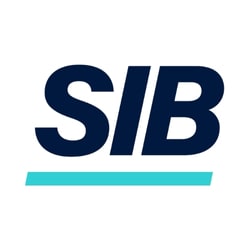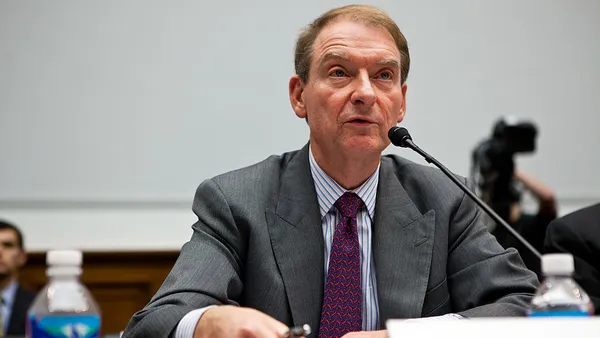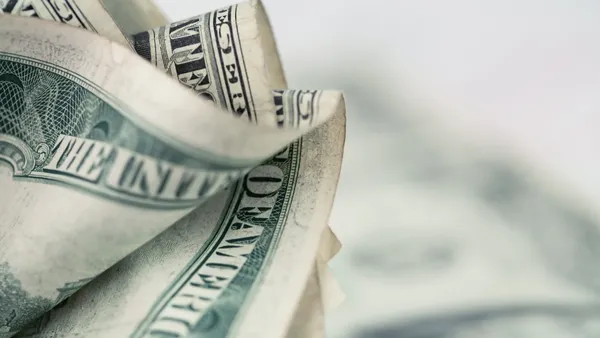Dive Brief:
- Federal Reserve Chair Jerome Powell said Wednesday that the central bank will trim the main interest rate from a two-decade high before inflation falls to its 2% target from the 2.6% annual rate in May.
- “You don’t want to wait until inflation gets all the way down to 2% because inflation has a certain momentum,” Powell said in testimony to the House Financial Services Committee. “If you waited that long, you probably waited too long because inflation will be moving downward and will go well below 2%, which we don't want.”
- At the same time, Powell emphasized that he was not signaling the timing of a cut to the federal funds rate from its current range between 5.25% and 5.5%. Policymakers need to ensure price pressures are steadily falling before reducing borrowing costs, he said, adding “we want to have greater confidence” in a disinflationary trend.
Dive Insight:
A decline in the Fed’s preferred inflation measure — the personal consumption expenditures price index — to 2.6% in May from 4% a year earlier has prompted policymakers to focus more on the job market, which has shown signs of cooling in recent months, Powell said.
The Fed is mandated by Congress to pursue two goals: maximum employment and price stability.
“For a long time we've had to focus heavily on the inflation mandate,” Powell said.
But now “the labor market is getting pretty much in balance to where it needs to be” as demand for workers better aligns with a pandemic-period decline in available labor, Powell said. Policymakers could trim the benchmark interest rate “if we saw unexpected weakening in the labor market.”
The unemployment rate rose last month to 4.1% from 4% in May and from as low as 3.4% in April 2023, the Labor Department said Friday.
Also, the ratio of available workers to open jobs has improved in recent months and the quits rate, or the number of workers who left their jobs as a percent of total employment, has fallen to within the top of the range that preceded the pandemic.
“We’ve seen considerable softening in the labor market,” Powell said.
Several lawmakers underscored the pain to their constituents from high price pressures in recent years.
“Inflation is something not only the nation is feeling but my constituents are feeling,” Monica De La Cruz, R-Tx, told Powell.
“They're feeling that at the grocery store, they're feeling that at the gas pump,” she said. “People who are living paycheck to paycheck, they still can't get away from these increasing costs at the grocery store or the gas station — so even small changes have a big impact in rural communities like mine.”
Powell reaffirmed the determination of policymakers to finish the job of cooling inflation to their target from a four-decade high. “We’re going to return to 2% inflation — I’m reasonably confident,” he said.
Despite aggressive monetary tightening, the Fed can continue slowing inflation without causing widespread job loss, Powell said.
“There is that path” to a so-called soft landing, he said, adding “we’re very, very focused on staying on that path.”
Indeed, Powell said his top concern — the worry that keeps him up at night — is curbing price pressures without triggering high unemployment.
“We want to get inflation down to 2% but we want to keep a strong labor market too,” he said. “That is the thing that I think about in the wee hours.”














